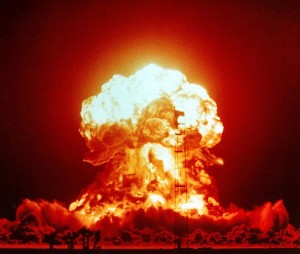
Almost every time I discuss protons, neutrons and the nucleus of an atom, or at least so my students complain, I end up talking about nuclear fission and fusion and nuclear weapons. If the discussion goes on long enough I tend to bring up the cold war and how the fear of mutually assured destruction (MAD) reduced the chance of a hot war. I don’t often get into how the explosions from a nuclear exchange could put so much dust into the upper atmosphere that it blocks the sunlight and create a nuclear winter that would affect life all around the world. A nuclear winter that would have an effect similar to the winter created by the asteroid impact that lead to the extinction of the dinosaurs.
The danger of nuclear weapons have not, unfortunately, gone away. There is a facinating article in Scientific American on how even a “small” nuclear war could have global consequences. They have a great quote from Mikhail S. Gorbachev about how,
“Models made by Russian and American scientists showed that a nuclear war would result in a nuclear winter that would be extremely destructive to all life on earth; the knowledge of that was a great stimulus to us, to people of honor and morality, to act.”
The major finding of the research in the article is that even a small nuclear war, such as between India and Pakistan, could lead to a significant global nuclear winter.
I like to take every chance I get to tie natural and social world concepts together. It’s one of the things I enjoy most about teaching in an interdisciplinary Montessori classroom. There is a beautiful and scary story here about how the science of the infinitesimally small has had a fundamental effect on the major geopolitical conflict of the latter half of the 20th century, and continues to affect us today.